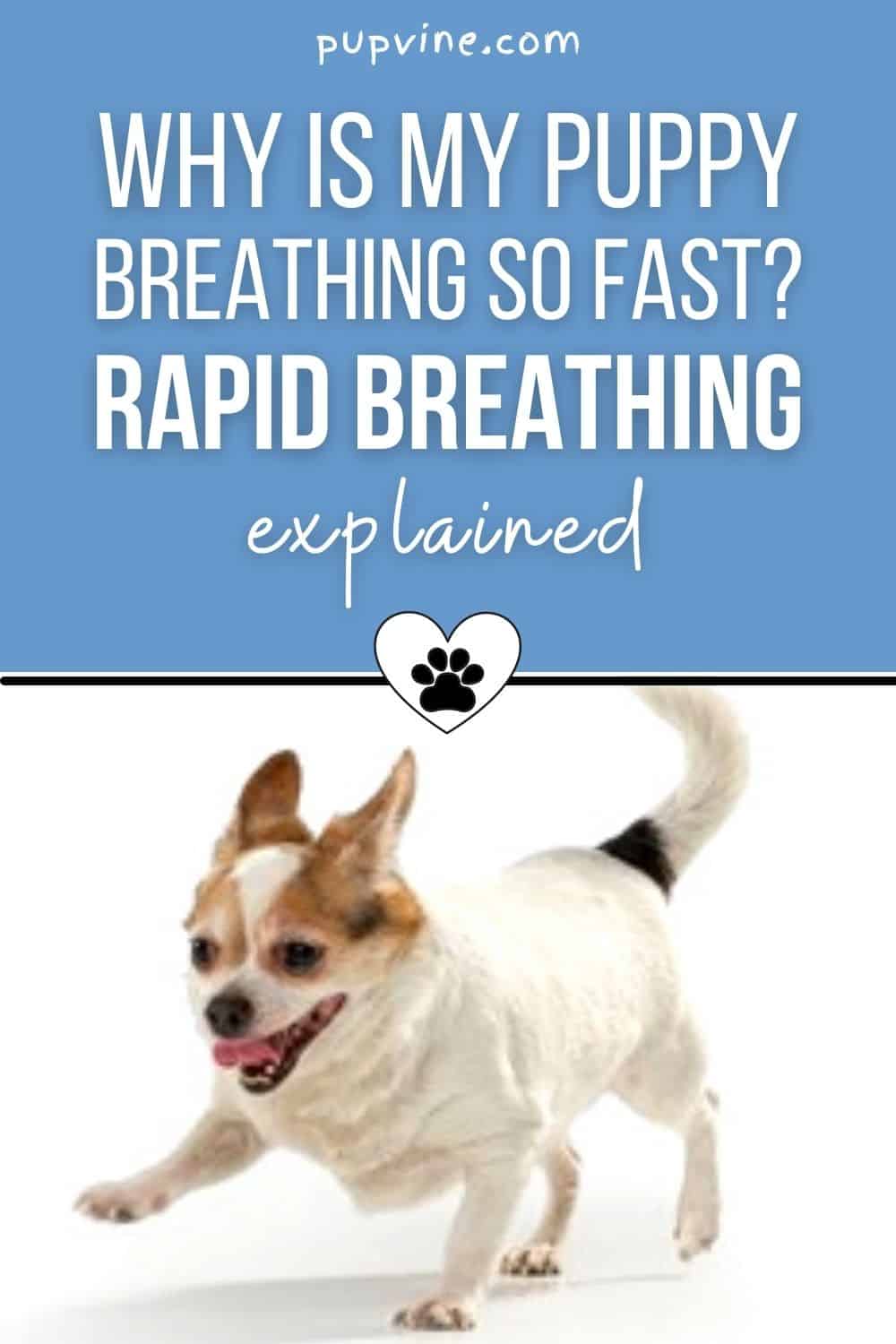Owning a dog is a huge responsibility. You welcome them into your family, you shower them with love and affection, and you watch them grow.
They reward you with loyalty and companionship, returning your love unconditionally.
However, there is more to it than just this. There will be times of worry and anxiety.
Illness and injury are always a cause for concern, especially for first-time dog owners. And one cause of distress could be when you see your precious new puppy breathing rapidly.
Imagine you’ve chosen your precious new pooch and are heading home. It’s probably the first car ride they’ve had. Everything is new and scary.
You keep them secure and try to soothe them, but you can feel their little heart racing, and they seem to be breathing really fast.
Are they having difficulty breathing? Is this normal? Do you call the veterinarian straight away, or is this something that will pass?
It can be so hard to tell, especially with such a tiny pup that seems so helpless and vulnerable.
There are many possible reasons why any dog might experience rapid breathing, depending on the breed, age, health level, circumstances, and so forth.
This guide is designed to put your mind at ease, explaining all the different possibilities in detail and suggesting at which point you should seek expert medical help.
We’ll focus on puppies, as you are more likely to see rapid breathing in younger dogs, though you can also find information here about adult dogs.
Puppies need special care to give them the best chance of living a healthy life, so it’s vital to get a quick diagnosis if you spot any problems.
Finding Your Dog’s Natural Respiratory Rate
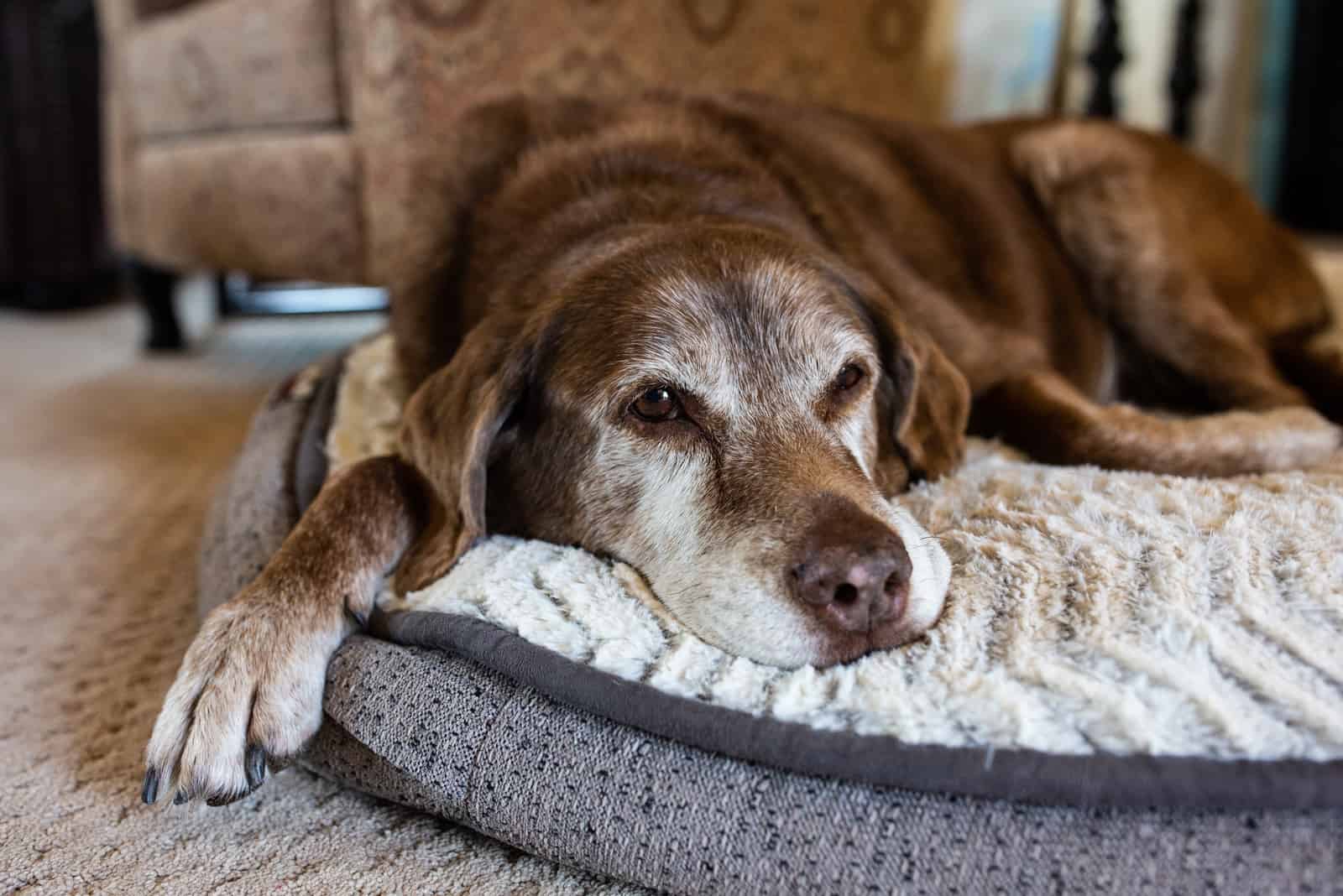
The first point to make here is that all dogs, just like humans, breathe at different rates depending on what they are doing at any one time.
It’s simple biology; all animals breathe to provide their bodies with oxygen. When activity increases, the rate of breath speeds up to make sure oxygen levels are kept high enough to supply the body.
To help you keep a careful eye on your dog’s health, it’s a good idea to be aware of their natural respiratory rate. In this way, you can have a better idea if or when their breathing has become abnormal.
The best way to establish this is to wait until they are calm and relaxed, which may be easier said than done! Puppies are hardly known for being casual and laid-back.
If you can’t manage to catch them when they’re at rest, you may have to wait until they’ve worn themselves out and have fallen fast asleep.
To complicate matters further, very young dogs have a naturally faster normal breathing rate than adult dogs when they sleep.
It’s known as puppy rapid breathing, and it can be worrying for those not accustomed to it.
Most of the time, when you witness your tiny pup’s chest heaving away as they snooze, it’s quite normal and nothing to worry about.
They sleep a lot, just like human babies, as this is a part of their natural growth process.
During sleep, they will dream (as you can tell from the rapid eye movement) about all kinds of things, probably to do with new sights, sounds, and smells.
Some of these will be exciting or scary, which sends the heart racing. This often accounts for an increase in the number of breaths they take.
They might also kick, yelp, or look like they’re trying to run. It’s all part of growing and is cute to watch!
So, as soon as you can, determine their natural rate of respiration. When they are relaxed or asleep, keep a timer or stopwatch to hand and count how many breaths they take within the space of one minute.
Each rise and fall of the chest counts as one breath.
Repeat this every day for a week or so to find an average rate, which will serve as a guide in suspected cases of abnormal breathing.
Note: avoid doing this straight after the pup has been active! If their tongue is out and their mouth open, then they are panting, which can increase the respiratory rate to as much as 400 breaths per minute!
Average breathing rates for puppies fall somewhere between 15 and 40, which is a pretty broad range.
What Conditions Can Cause Rapid Breathing?
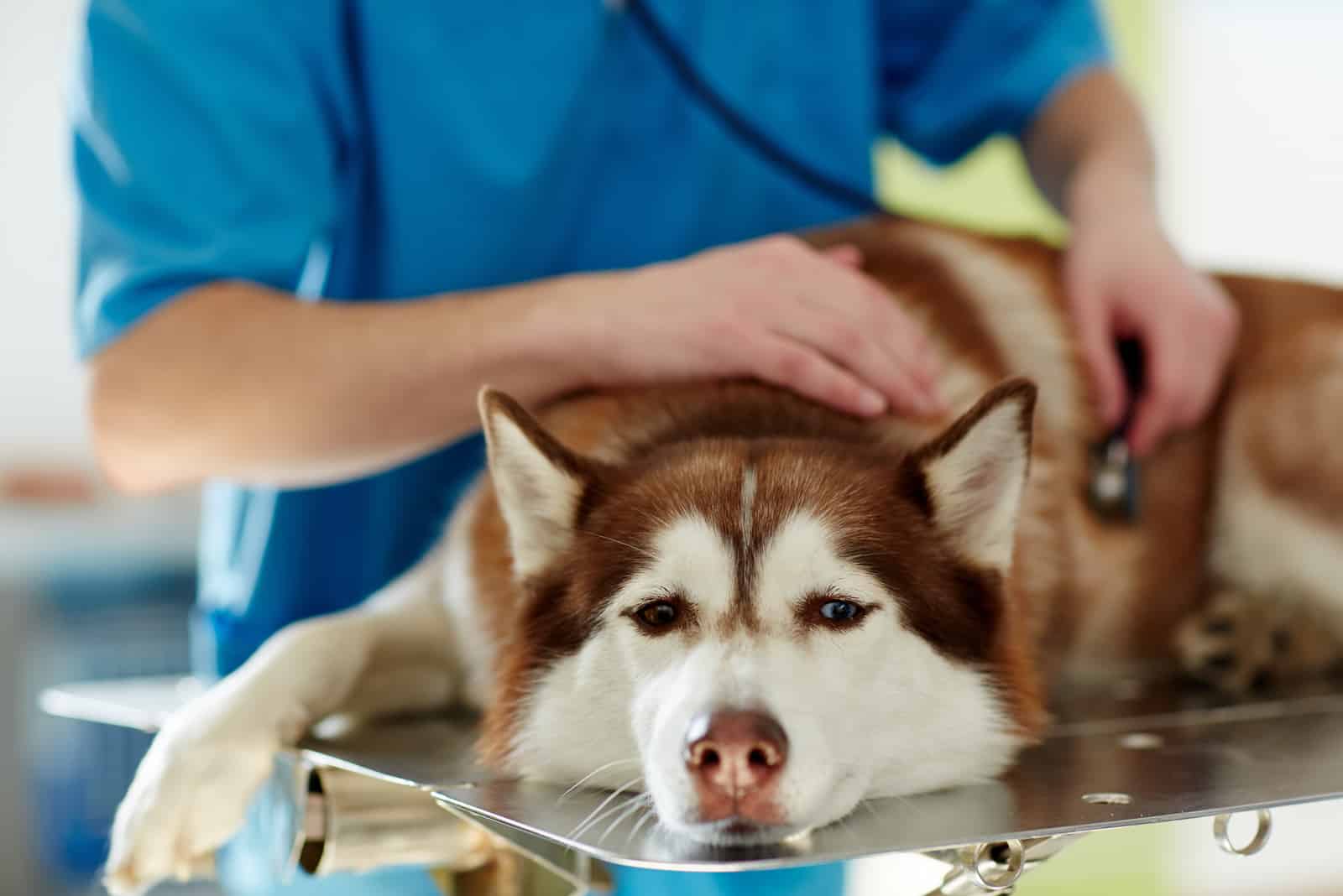
Most dogs seem to have endless energy, though there are exceptions. Whatever the breed, however, it is a sure thing that after a good run around the yard or playtime in the park, they will throw themselves down and let that tongue hang out.
This is normal and nothing to be concerned about. In fact, it’s good for them to get plenty of exercise to keep them fit and to avoid becoming obese.
As dogs don’t possess sweat glands like humans (they have them in their paw pads!), panting is their way of cooling down and catching their breath. It can look uncomfortable to us but rest assured, it’s fine in most cases.
The time to be alert is when dogs start to pant for no apparent reason.
If, for example, they haven’t been chasing squirrels or frisbees in the park or romping with their playmates but have collapsed in a slobbering, panting heap, then you’ll need to find out why, and quickly.
What’s the climate like where you live? Is the weather unusually warm? Is there a storm? Dogs can pant when excited, stressed, or scared.
In scenarios like this, it’s only common sense to seek ways of alleviating the problem. It’s not a physical problem and can usually be resolved, or at least eased, with some care and creative thinking.
Hot weather, storms, and fireworks aside, there are plenty of other, more serious reasons for a dog to develop rapid breathing.
It can signal a range of health problems that need veterinary attention, so let’s take a moment to learn what these are.
Dyspnea
This is related to heart failure or heart disease, where fluid collects in the lungs (known as pulmonary edema), which makes it difficult to take a full breath. Because of this, the blood won’t contain enough oxygen, so the dog will be breathing quickly to try to compensate.
They may stand or sit with their front paws slightly splayed as it is easier for them to catch their breath this way, and they will be reluctant to lie down as this makes it harder to breathe.
Another sign of dyspnea is that their tongue will appear blue or purple because of the lack of oxygen in the blood. This will be accompanied by heavy breathing.
If you observe these symptoms in your dog when they are at rest (that is, not immediately after any strenuous activity) and the breathing is rapid and labored, then you should urgently seek veterinary assistance.
Aside from permanently damaging the lungs, this can be fatal if not treated properly.
Tachypnea
Similar to the above condition, this one could also be connected with heart problems. However, it is also a result of respiratory disease, bloat, and anemia.
It can also be brought on by some of the ‘minor’ issues mentioned earlier, including heat, stress, fear, or fever. You can find more useful information in our article on dog’s temperature chart.
Even so, these symptoms should never be ignored or taken lightly, as they can develop into dyspnea if left untreated.
Puppies and younger dogs are particularly at risk of respiratory disease because their immune and respiratory systems have not yet developed fully.
These conditions can be life-threatening and should be checked out immediately.
The veterinarian will assess the situation by asking you questions to establish if there could be any contributing factors before examining your dog.
They will check for heart murmurs or fluid on the lungs and will check their respiratory rate (your figures could help here!).
They will look at the tongue and gum color, which determines whether the oxygen levels are adequate or that the red blood cell count is too low.
The latter could be a sign of anemia, which has many causes and could be fatal if not treated. Let’s look a little further into this condition to help you recognize the symptoms.
Anemia
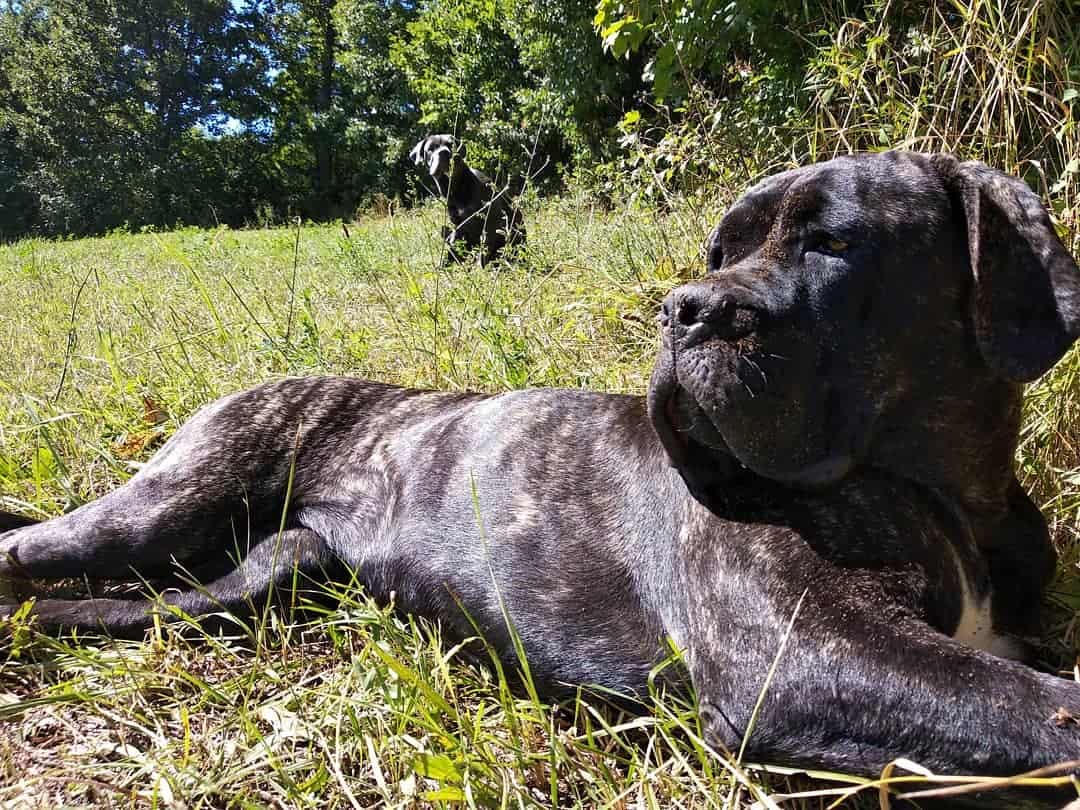
Photo from:@i_molossi_del_cimone
First, a quick biology lesson: red blood cells are formed in the bone marrow, stimulated by the kidneys.
From here, they are sent to the lungs, where they collect oxygen and then pumped around the body by the heart to send the oxygen-rich cells to all parts of the body.
Blood loss, low RBC (red blood cell) count, and the destruction of RBCs are the main causes of anemia. These three factors are a result of other complications, such as:
• Kidney issues
• Chronic disease
• Autoimmune disease
• Chronic inflammation
• Internal or external bleeding
All of these issues will force an imbalance in the RBC count, with the dog unable to replace them to match the speed at which they are being lost or destroyed.
Mild cases of anemia are difficult to spot without a blood test, but early diagnosis is essential as it could very well signal a more serious underlying condition.
Anaphylaxis
This is a severe allergic reaction to something like a bee sting or even a vaccination. It is further complicated by the dog panicking as it struggles to breathe.
Brachycephalism
Brachycephalic (basically meaning ‘short-headed’) dog breeds include Boston terriers, pugs, bulldogs, boxers, Shih Tzus, and so on.
Many years of selective breeding have produced the distinctively shaped head; wide, flat-faced, with a protruding lower jaw and characteristic folds of skin.
While it may appeal to us, it can present many health issues for the breeds involved, including breathing problems.
Dogs have naturally long snouts for a reason. When they are hot, they open their mouths and allow their tongues to protrude.
As they pant, the air is drawn over the tongue and through the snout, where the moisture evaporates. This allows air to cool down the blood as it passes through the tongue, as well as providing the necessary oxygen level.
Brachycephalic dogs, however, can’t do this as they lack the long snout. Panting doesn’t work as efficiently, and they can easily suffer from heatstroke.
To compound the problem, their airways are restricted as everything is cramped inside the skull, meaning that they often struggle to draw breath.
If your pug, bulldog, or other ‘short-headed’ puppy is breathing fast and appears to be in distress, then you need to act quickly — especially if they haven’t been exerting themselves.
It is vital to bear in mind that dogs don’t deal with heat as efficiently as humans. Heatstroke and heat exhaustion can both be fatal to dogs.
Always ensure your furry friend can access fresh, clean water, and move them to a shaded, cool area if their body temperature is too high.
If they don’t settle and continue to whine or appear to be in pain, then seek medical advice.
Aside from overheating, brachycephalic breeds can suffer from a host of other health problems whose symptoms include rapid breathing.
Amongst these are soft palate disorders, which have a range of unpleasant symptoms, often related to difficulty with breathing, eating, and drinking.
How Can Abnormal Breathing Be Treated?

Any treatment will depend on what has caused the problem. When you are anxious about your canine friends, it is easy to imagine the worst.
While it’s vital to seek the opinion of a qualified veterinarian, try to take note of all the symptoms that will help rule out the more serious illnesses.
For example, kennel cough, a respiratory infection caused by viruses and bacteria, is usually mild and doesn’t always need treating and should disappear by itself within a few weeks. The cough may sound alarming but is rarely a serious problem.
However, puppies and older dogs with pre-existing medical conditions are prone to developing pneumonia, so it is probably wise to have them checked over.
Once a cause for hyperventilation has been determined, whether by yourself or the vet, then action needs to be taken.
First and foremost, the dog has to be stabilized. If overheating is the cause, then cool them down by moving them to a cool and shaded area.
Douse them with cool water (not cold water, as this could cause them to go into shock!) and let them drink small amounts of fresh water frequently.
You could also dab cool water on their paws or ears and set up a fan to blow over them.
Continue this process until their breathing has calmed down. If there is no change, then they’ll need veterinary attention.
For other causes where a range of symptoms are displayed, such as a loss of appetite, trouble breathing, increased heart rate, and so on, particularly when the dog has been inactive, then don’t delay in seeking help.
The veterinarian will, as mentioned above, ask you questions to quickly establish what is wrong as they try to stabilize your pet and cool them down.
They may take x-rays to help them see any internal problems. They might use a sedative, steroids, or antihistamines.
These are usually preliminary measures to normalize the respiratory rate and help the dog feel more comfortable. Following this, they might recommend surgery if there is an obstructed airway.
If the symptoms are a sign of any of the more serious conditions listed above, they will suggest a course of action accordingly.
A Quick Recap To Take Away
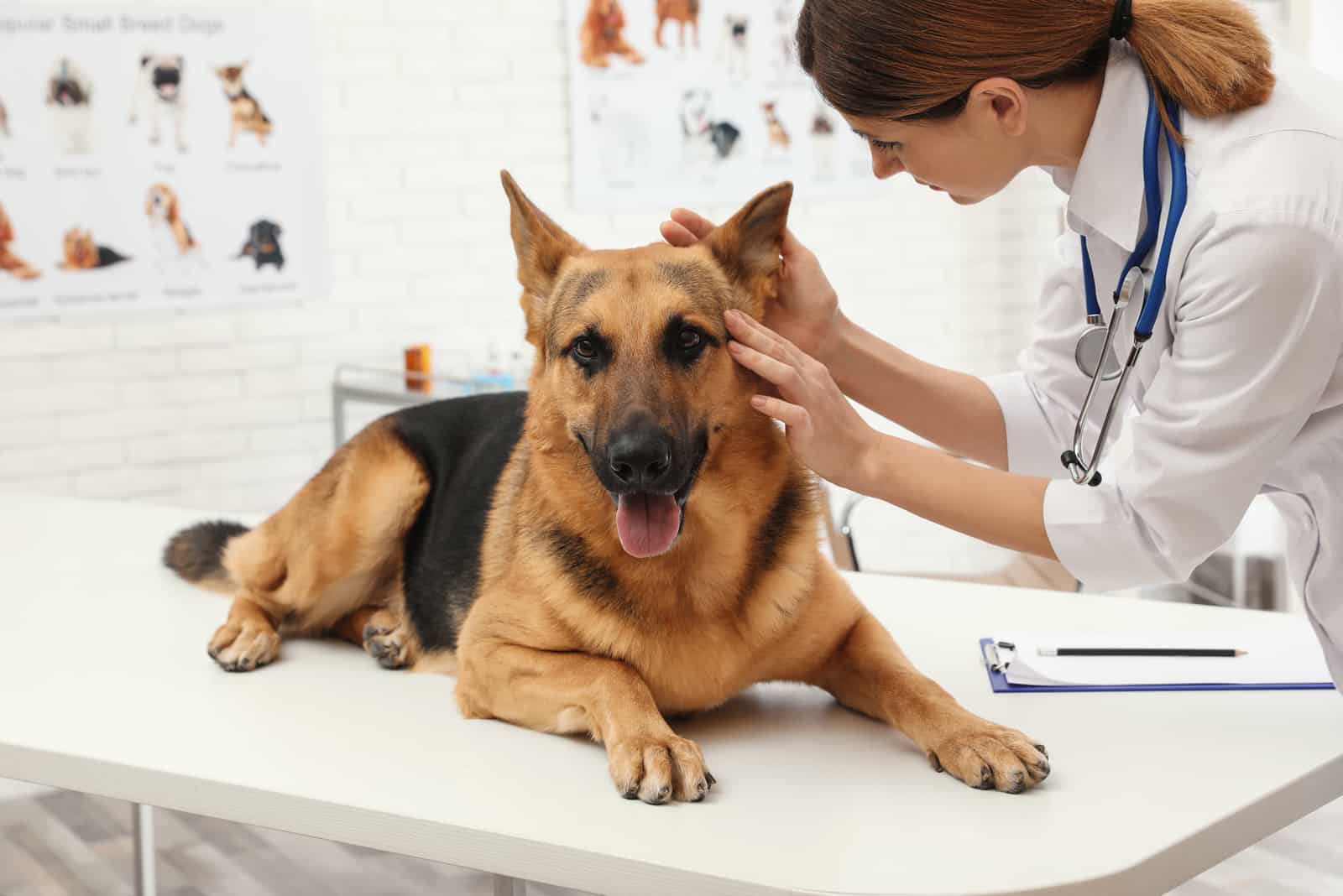
Whatever your dog’s age, you want to make sure they are okay, but puppies make us particularly anxious.
You’ve brought that precious little bundle into a new home, and now you’re worried about it as you watch that tiny chest heaving in and out rapidly.
So you Google ‘why is my puppy breathing fast?’ The chances are that it’s all fine. Puppies just breathe quickly, especially after being active.
And when they sleep, they frequently dream about all the fun and games they had or the scary things they encountered.
In most cases, rapid breathing can be explained away and won’t need further action.
The time to be concerned is when several symptoms are displayed, and your dog is clearly distressed. In these cases, check the color of their tongue to see if it is blue or purple.
Checking their temperature can be tricky, but signs of high temperature (fever) include red eyes, lethargy, shivering, dry nose, warm ears, and loss of appetite.
One of the best ways to reduce the risk of any of these conditions is through regular check-ups at a veterinary clinic to catch it early and obtain treatment.
Different breeds are susceptible to a variety of diseases and illnesses. But with a good, healthy diet, plenty of exercise, and regular health checks, you can limit the chances of ill-health in your precious pooch.
Related Link:
• My Puppy Won’t Stop Biting Me, I’ve Tried Everything
• 12 Reasons For Your German Shepherd Breathing Fast
